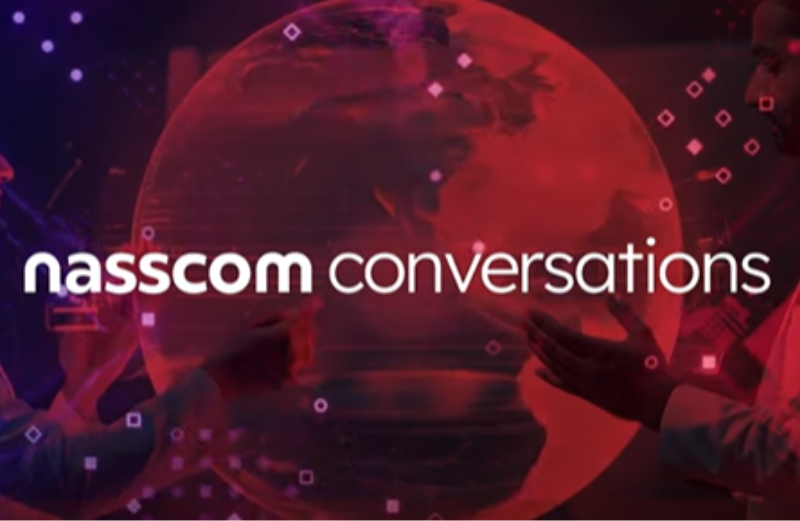Transcript Disclaimer: This transcript has been generated using automated tools and reviewed by a human. However, some errors may still be present. For complete accuracy, please refer to the original audio.
00:00:08 ADITYA NATH JHA
Welcome to this edition of India Means Innovation, where we discuss the technologically complex innovations coming out of India. Today we have with us Thiruvazh Marban, who is the senior technology leader from HCL Tech's Med Tech Engineering business. HCL Tech is a global technology company, about $14 billion in revenue. Welcome, Marvin.
00:00:37 THIRUVAZH MARBAN
Thank you.
00:00:38 ADITYA NATH JHA
Marvin, you have created this incredible medical device called Myocardial Protection System. Can you tell us a little bit about it?
00:00:52 THIRUVAZH MARBAN
So as the name says, myocardial protection system protects the heart when it is, you know, stopped for a cardiac procedure. So basically it's a combination of drug, device and set of administering protocols. So in short, it protects the muscles of heart when it is stopped for a cardiac surgery.
00:01:10 ADITYA NATH JHA
So a patient is having a heart surgery. The heart has to be stopped, correct? And the patient has to be kept alive. The heart has to be kept alive and this device manages.
00:01:24 THIRUVAZH MARBAN
That exactly.
00:01:25 ADITYA NATH JHA
It's an extremely critical piece of device because the life is at stake, yes. And it has been designed, architected and developed by your team here in Chennai? Yes.
00:01:37 THIRUVAZH MARBAN
100%.
00:01:38 ADITYA NATH JHA
How is the heart stopped? What is the process?
00:01:42 THIRUVAZH MARBAN
The heart is stopped using the drug and that is administered by following certain protocols, either in intervals or continuously, depending on the case.
00:01:52 ADITYA NATH JHA
The earlier generation of such machines were mainly mechanical and electrical combination.
00:02:00 THIRUVAZH MARBAN
Exactly.
00:02:01 ADITYA NATH JHA
And now you all would have introduced digital embedded into it, correct? Now that is what controls the injection.
00:02:11 THIRUVAZH MARBAN
So earlier when it is manual, it is like Rotary knobs, manual Rotary knobs and you know push buttons, lot depends on the operator, the perfusionists. So many things are automated with the new system and it increases the efficiency as well as the safety and it allows a lot of, you know, pre planning and preprogramming the system before the surgery itself.
00:02:32 ADITYA NATH JHA
And in such a life and death situation, what are the technical challenges?
00:02:37 THIRUVAZH MARBAN
So if you would look at it as an engineering piece, there are various technologies. Once there is a fluid obviously you know there is a fluidic control and fluidics comes with its own complexity, the viscosity and the you know the movement speed inside a micro needle and then that is followed by some material and how the delivery is made. So there is a material involved and there is a properties of material and there are mechanisms which pushes a drug out and this is again controlled by software and some PID algorithm. So this is the first time, you know, where everything has to be controlled by the software or the system by itself. So obviously, you know, it was a challenge in creating the specification itself. Basically, you know, converting the user requirements into software and system specification, that was a challenge first. So all these are from, you know, different engineering fields and they need to be put together to achieve, you know, high accuracy delivery of, you know, this drug. So that makes it really complex. I mean there is no room for error, right?
00:03:32 ADITYA NATH JHA
Now this combination of electromechanical, embedded, digital, you have a cross functional team working on this design.
00:03:43 THIRUVAZH MARBAN
Yes, it is a cross functional team, right? For there is a mechanical team which focuses on the delivery mechanism and there is a material team which does some simulation of the, you know, material, how it interacts with the drug before injecting into the body and further simulation. So how the body will react because different hearts may offer different pressure to the drug.
00:04:02 ADITYA NATH JHA
And what if the machine suddenly stops?
00:04:05 THIRUVAZH MARBAN
So there are requirements that the machine needs to boot up in very few seconds. But typically in an embedded system with such a large graphics library, it would take like 30 to 40 seconds. So we have done some fine tuning to, you know, boot up the machine like 2-3 seconds. Even in case of a reboot requirement, it happens within seconds, like 2-3 seconds.
00:04:23 ADITYA NATH JHA
How many such procedures have taken place using the device designed and created by your team?
00:04:30 THIRUVAZH MARBAN
Since the product is launched, should be more than quarter million procedure. I don't know the exact number, but definitely more than one quarter million procedure.
00:04:39 ADITYA NATH JHA
And not one adverse incident.
00:04:43 THIRUVAZH MARBAN
That's measure of our success, especially.
00:04:45 ADITYA NATH JHA
Because it's such a critical life and death a situation.
00:04:48 THIRUVAZH MARBAN
Of course, we were quick in the initial phase where we were able to come out with a viable product that can be tried on animals within like 18 months. So from that point onwards it is like refining and fine tuning and finally it hit the market with all the approvals suitable for human use and.
00:05:04 ADITYA NATH JHA
This is a great example of digital and software disruption of core engineering, Yes. And this is a great example of India means innovation. Thank you, Marban . Thank you so much.
00:05:19 THIRUVAZH MARBAN
Thank you.













